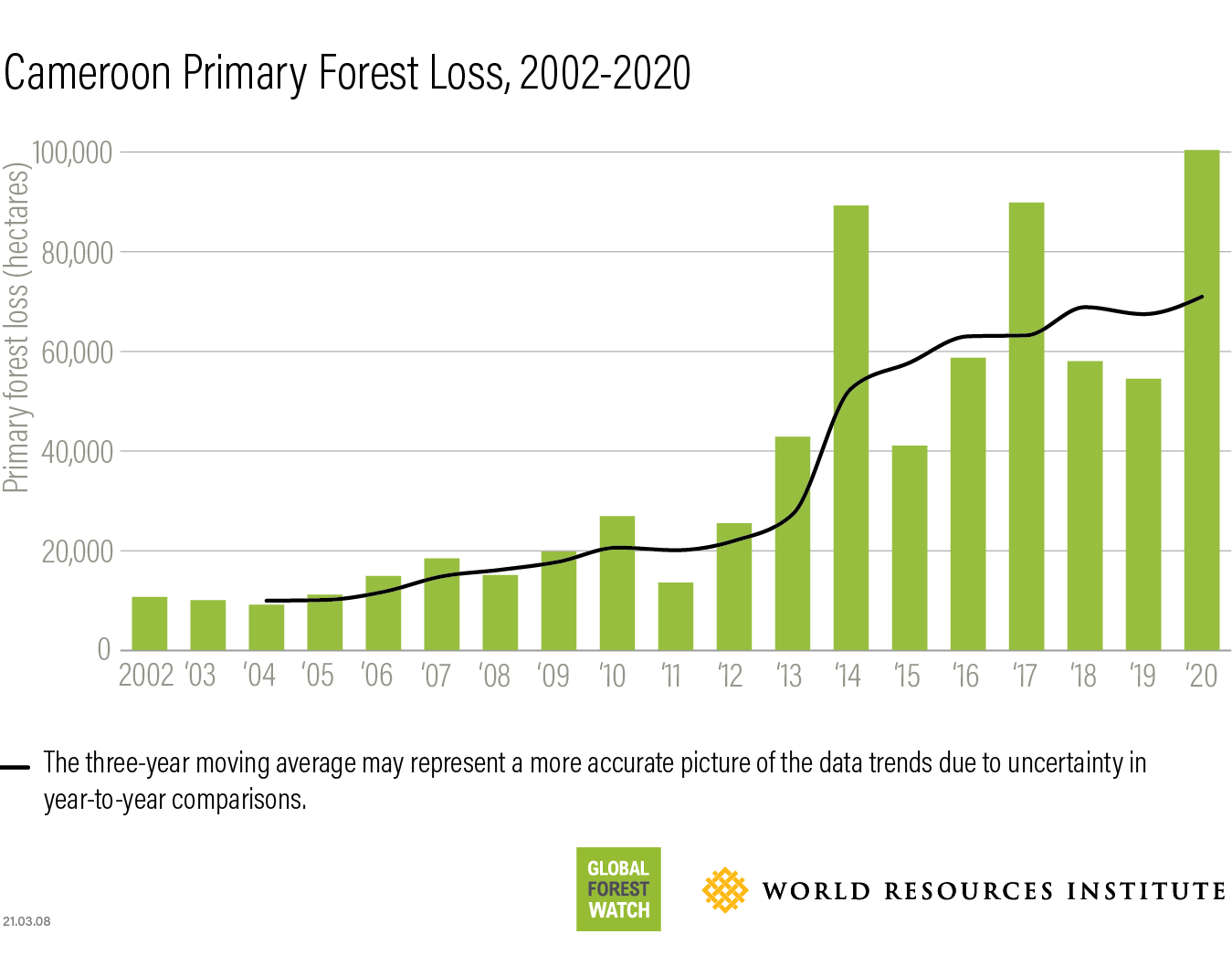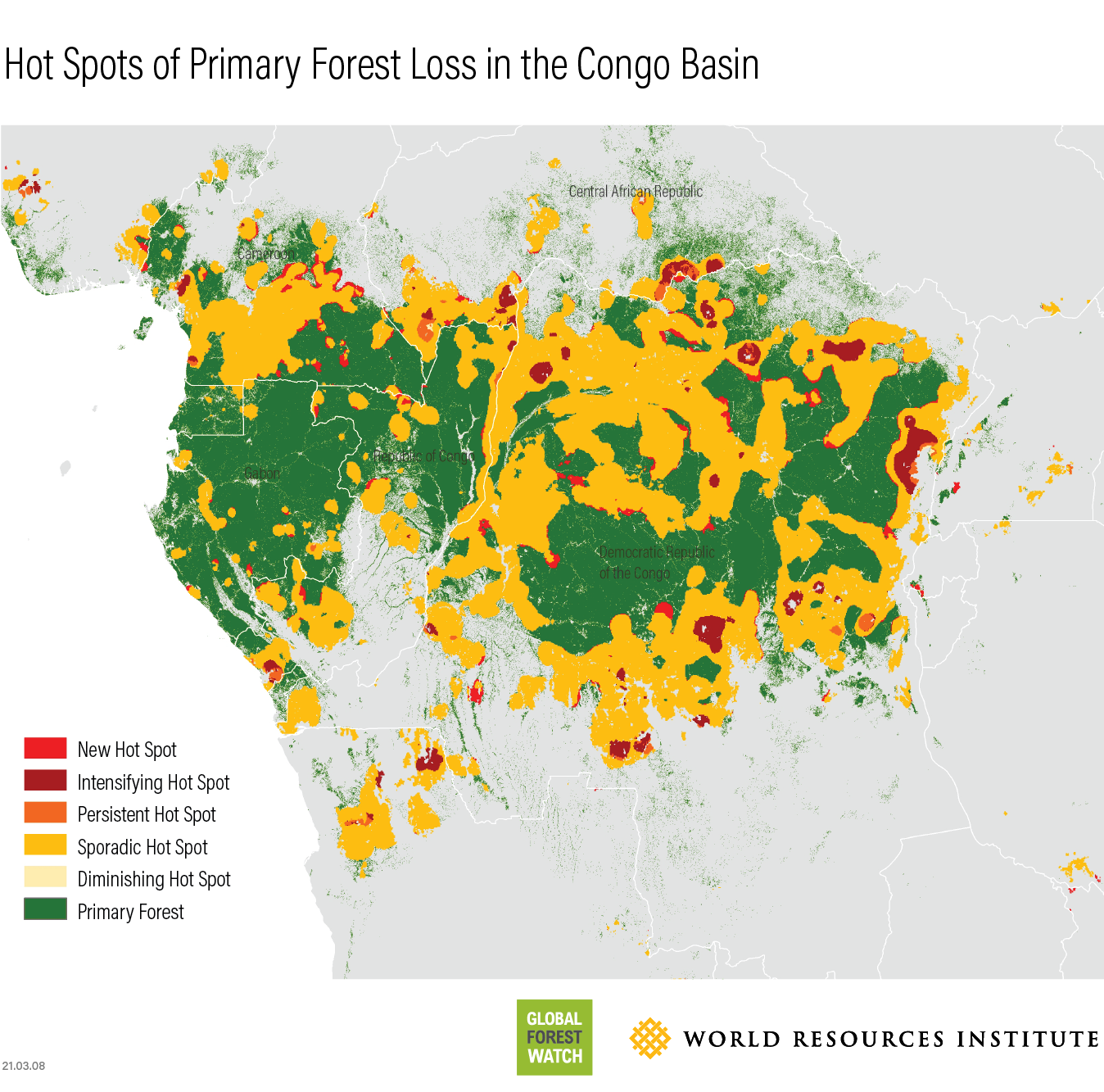The second-largest world’s rainforest lost more than 600,000 hectares of primary forest in 2020, which is a 9 percent increase compared to 2019, according to recent data from the Global Forest Watch (GFW) – a forest monitoring tool hosted by the University of Maryland in the United States.
According to the data published on March 31, 2021, 2020 has been the third most challenging year for the world’s tropical forests over the past two decades. COVID-19 travel-related restrictions have not slowed the destruction of tropical forests. Rather, GFW data shows that primary forest losses rose by 12% from 2019.
More than 12 million hectares of forest were destroyed worldwide in 2020. A fourth of these forest cover losses occurred in primary forests, which are areas of high importance for biodiversity protection and carbon storage.
More than 4 million hectares of primary forest were destroyed in 2020, an area equivalent to the size of the Netherlands; write Mikaela Weisse and Elizabeth Goldman of the World Resources Institute (WRI).
Losses of primary forests are also increasing in the Congo Basin, which according to studies, is nevertheless a major source of rainfall in the Sahel region. The Democratic Republic of Congo, Cameroon, the Republic of Congo, Gabon, Equatorial Guinea, and the Central African Republic account for more than 600,000 hectares of primary forest loss in 2020, a 9% increase compared to 2019. The Democratic Republic of Congo and Cameroon are in the top 10 countries with the greatest primary forest loss in the world in 2020.
Pressure on Cameroon’s Forests
Forest destruction escalated in Cameroon in 2020. As the COVID-19 pandemic was restricting movements and slowing down economic activities globally, Cameroon’s forests were under the fury of chainsaws and other human agricultural activities. Cameroon has lost more than 100 thousand hectares of its primary forests in 2020, almost twice the primary forest destroyed in 2019. This Central African country ranks 7th in the top 10 countries with the largest area of primary forest destroyed in 2020.
According to Global Forest Watch data, most forest loss is associated with agriculture in the country’s southern region. More than 60 percent of these losses were recorded in the Central and Eastern regions – the main forest areas of the country. In the Southern part, which has vast areas of forest coveted by agribusinesses, the GFW interactive map shows new areas of primary forest loss, including the Océan department.
Camvert, a palm-oil company operating in the region, plans to exploit 60,000 hectares of forest for its agro-industrial project near the Campo Man National Park, a UNESCO World Heritage Site. Covering the districts of Campo and Nyeté, the coveted parcel was once reserved for logging.
But the Cameroonian Prime Minister declassified it in November 2019 for “agricultural production,”This new agro-industrial oil palm plantation is home to 7 communities of indigenous Bagyeli people who derive most of their resources from the forest and some 20 villages of Bantu people.
Despite strong protests from civil society after the declassification of this forest, Camvert started its activities in mid-2020, thanks to an authorization from the Minister of State Property and Land Tenure obtained in April 2020, in the middle of the pandemic, which gave the company the right to exploit 2,500 hectares.
Greenpeace Afrique and other civil society organizations accuse Camvert of having already “cleared at least 1500 hectares of forest in violation of Cameroonian law.” In October 2020, the indigenous organization BACUDA filed a complaint with the Committee on the Elimination of Racial Discrimination (CERD) on behalf of the Bagyeli indigenous people to oppose the Camvert project in their forests.

Perte de forêts primaires au Cameroun entre 2002 et 2020. Source: Global Forest Watch/World Resources Institute
Agricultural Expansion in DRC Destroys Primary Forests
The Democratic Republic of Congo has lost 490 thousand hectares of primary forest, the equivalent to 534 million tons of carbon dioxide (C02) emissions in 2020. DRC has the 2nd largest area of primary forest destroyed in 2020 after Brazil. The DRC has held this position for four years now. Despite the COVID-19 pandemic, data shows an increase in primary forest loss in DRC in 2020, compared to 2019.
According to experts from the WRI, subsistence agriculture remains one of the most dominant drivers of this forest destruction. “Most losses, as in recent years, remain related to the expansion of subsistence agriculture and the use of wood energy” say Mikaela Weisse and Elizabeth Goldman.
Increasingly, researchers are trying to understand the driving forces of deforestation in the Congo Basin, of which the DRC holds about 60 percent of the forest area.
A recent study shows that between 2000 and 2015, “subsistence agriculture has been the main driver of forest clearing.” Published in January 2020 in one of the leading scientific journals (Land), the study highlights that these forest losses often occur close to large-scale agro-industrial and resource extraction activities. According to the research team’s estimates, “twelve percent of forest losses related to the expansion of subsistence agriculture were located within 5 km of mining, logging, or plantations.”
These projects result in a large flow of people. To survive, “the worker populations attracted to these areas create communities that depend on shifting cultivation and non-timber forest products for food, energy, and building materials,” says Giuseppe Molinaro, the lead author and an expert in geospatial analysis.
All recent studies stress the need for further research on the forests of the Congo Basin. For WRI’s experts, the Congolese government and all local and international stakeholders need to identify the main causes of deforestation in the DRC better and find effective solutions to reduce forest cover losses.

Les zones clés de perte de forêts primaires dans le bassin du Congo. Source: Global Forest Watch/World Resources Institute
Alongside Cameroon and the DRC, the Central African Republic is also experiencing increased forest loss, with more than 14,000 hectares of forest destroyed by 2020. Congo and Gabon record minor decreases. Equatorial Guinea lost 1,900 hectares of primary forest in 2020. For the first time in ten years, the country has experienced such a considerable decrease in the area of primary forest destroyed.
Editor’s note: This story was produced in partnership with the
Pulitzer Center’s Rainforest Investigations Network.


C’est une belle occasion de s’unir et de pouvoir connaître les réalités du journalisme et les vérités. Un honneur d’être connecté. Sous vos ordres, nous continuons à tracer le chemin. Merci beaucoup.
Hi, I am working on Primary and Intact Forest protection in Africa. I am interested in getting more data and publications on primary, Sacred and intact forests in Africa underpinning the Congo and Guinean forest and west Africa.